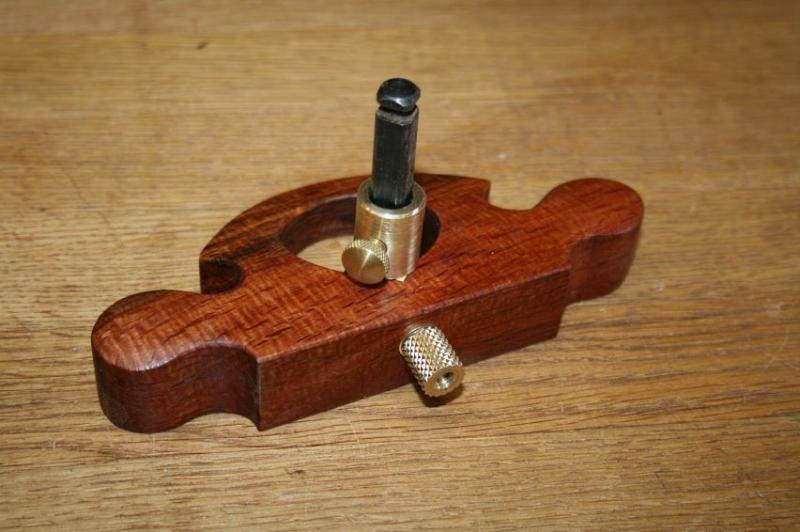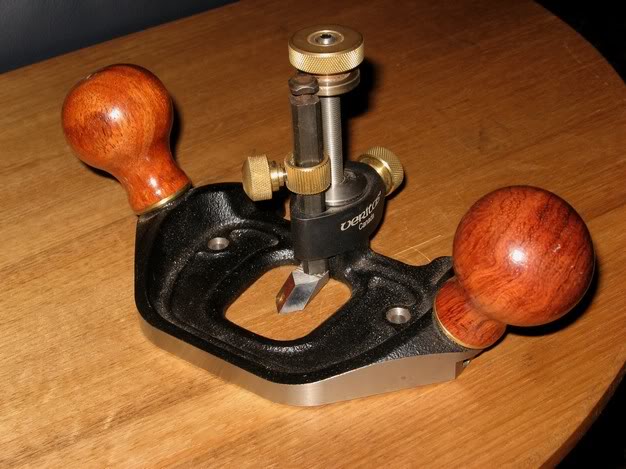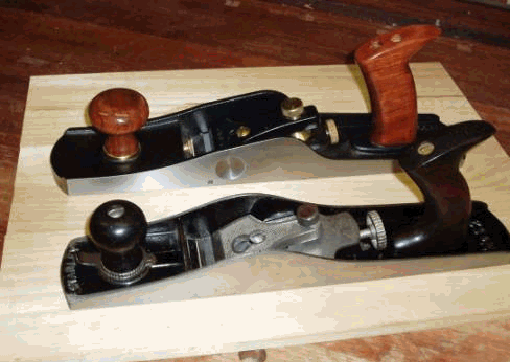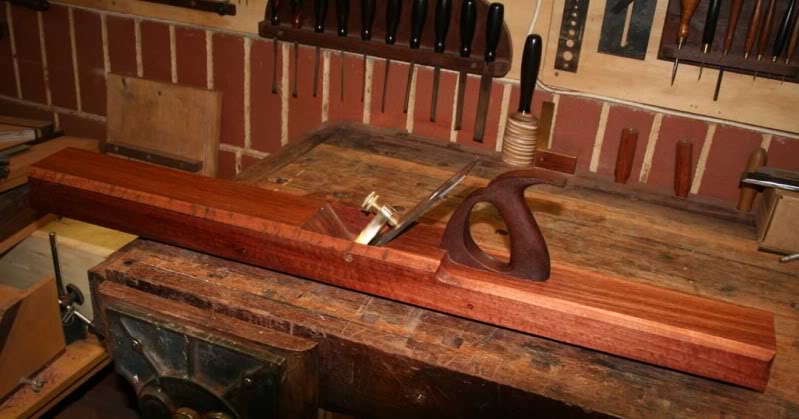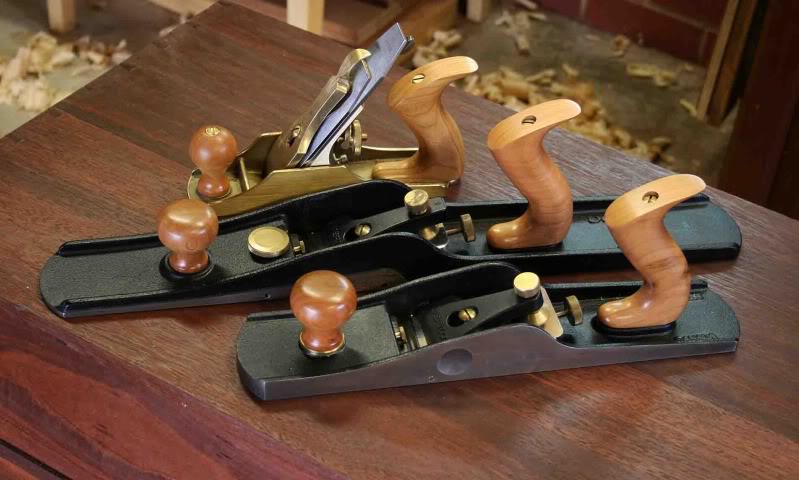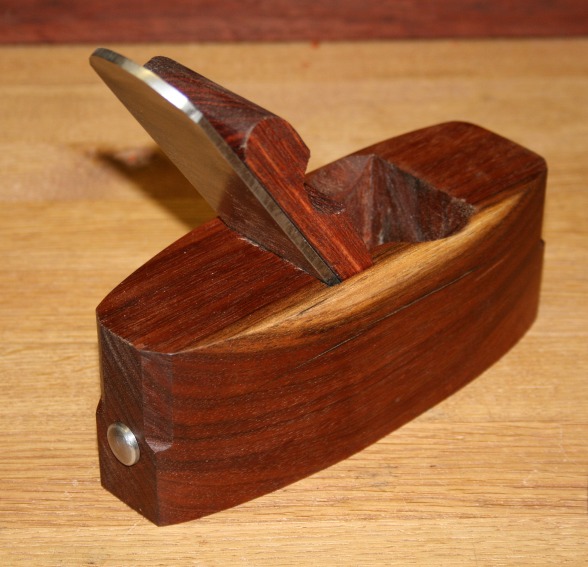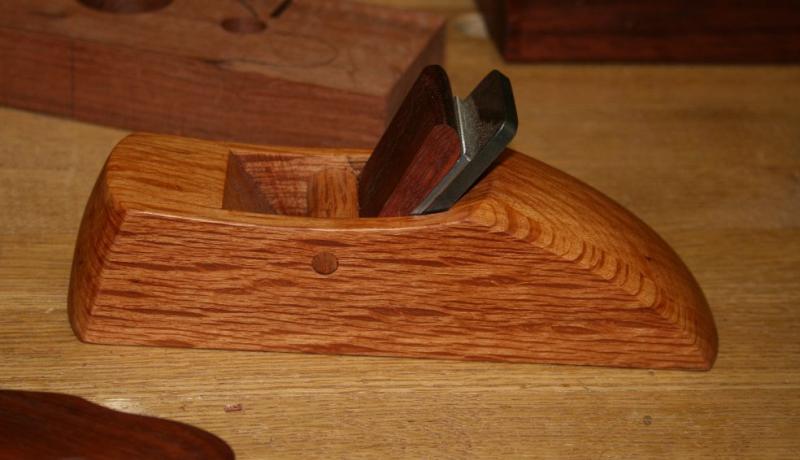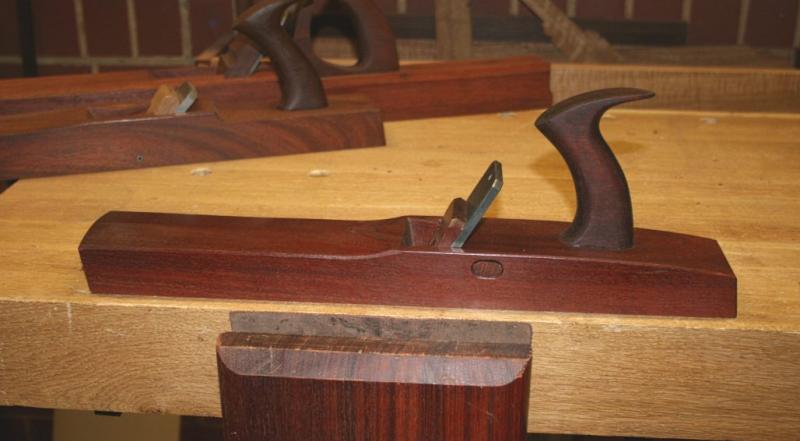I have responded to this issue many times. Eventually I simply wrote an article on my website (which turned into a series of articles on tool design). This was written in 2013 ...
This article was written in response to a request on
Saw Mill Creek to explain what I meant by
Centre of Effort. I consider this a central concept in our effort to understand how to extract the maximum performance from our tools, not just planes. It is tuning and ergonomics and use, all rolled into one.
Centre of Effort is not the same as Centre of Gravity, although these terms can have the same effect.
As noted by Kees on SMC (probably from this
article), C of E is a term used in yachting. It refers to the position of power in a sail.
Bear with me as I sidetrack a little, just to provide some context. I am not an engineer. I am a shrink. I understand statistics, reality vs the imagined, interactions between parts, and systems theory. But do not ask me to calculate or explain vectors and forces. I know they are there. I can determine them subjectively, but I lack the knowledge to do so objectively. I am also certain that I am re-inventing the wheel here somewhat, but have not found reading material in this area (that is not to say that it does not exist). My focus has been, like the scientist, to understand how and why tools work and, like the designer, to integrate this knowledge into a tool. Others more knowledgeable can comment on the scientific areas. For the rest of us I think of this as a voyage of discovery, and we are all shipmates. The concept C of E is part of the language I use to convey my understanding of the process to you. Can you come up with a better one?
So where does C of E come from and what does it reflect? C of E is a yachting term that refers to the action of the wind on the sail, where it places it force ... low or high on the sail. Pressure at the top of the sail is different to pressure at the bottom of the sail. One does not just rig a sail and off you go - especially windsurfing sails, which is where my experience comes from.
It is necessary to tune a sail for optimal performance. I must emphasise that I do not know much about tuning a yacht sail, but windsurfing sails are a different matter. One can adjust these sails in a multitude of ways .... in a way similar to a handplane.
Please understand that sails are an analogy, and that my examples are borrowed to enable you to recreate how I reached these insights.
Now this is not intended to be a lesson in sail rigging, so to cut to the chase there are just two factors to focus on:
- Forces high on a sail cause instability.
- Forces low on a sail increase power and stability.
There are many variations for setting the force area on a sail, such as deepening its curvature to increase power (similar to increasing the camber of a blade to take a deeper cut). However this raises the C of E, and with this goes some control as wind strength increases (analogous to reducing control over grain tearout by increasing the depth of cut).
Rig the sail flat for speed, flatter at the top for control, or fuller at the lower end of the sail for power.
An important feature of low C of E is increased feedback. In my other article I used the example of a router plane I built - that the design focused on dropping the hands down the plane body and pushing (with thumbs) on the body directly behind the blade head ...
The Veritas (and LN and Stanley) use handles that lift the forces higher. The feel is completely different.
One might ask, "Well, is the low force just an example of a low Centre of Gravity?". My answer is no - the difference is that C of G is a force that is
permanently low, while C of E is a force that is
changeable (i.e. tuned to be low or high). One may build a low C of G into a plane, but it is also possible to lessen this in the tuning. Similarly, there are ways to reduce the C of E in a plane that has a high C of E.
Take, for example, the Veritas LA Jack (below). This was designed with a more vertical handle than the Bailey pattern Stanley/LN bench plane equivalent (say, a Stanley #62, also below). What this Veritas handle does is encourage one to push the plane forward. The Bailey, with its forward leaning handle, encourages one to push forward and downward. Pushing downward increases the pressure over the nose (= more resistance). The higher angle of the frog lifts the centre of gravity upward. The higher the frog angle the greater the resistance. In the LA plane the bed is closer to the horizontal, the push is forwards only, and the combination is one of low C of G and low C of E.
The razee style plane attempts to lower the C of E by encouraging that the plane is pushed from lower on the body.
The plane retains a high C of G as a result of the 50 degree bed. However the lowered C of E places the power lower down and increases its control.
BU planes optimise the combination of low C of G and low C of E.
I think that the original choice of handles for the Veritas BU handplanes was inspired. The vertical handles came in for much criticism from the public. Partly because they looked ugly in comparison to the beautiful and familiar lines of the Bailey, and partly because the grip was thick and wide. The thinner Bailey handles encouraged one to grip them firmly (since the handles also want to be pushed down). However when you do this with the Veritas they just feel too large. What you want to try is instead just simply pushing them forward with the heel of the hand.
The height of a bench is a game changer. A low bench suits a plane with a forward leaning handle. The forward leaning handle also suits the plane with a high C of G as control and power comes from forcing it down towards the bench. A vertical handle is uncomfortable on a low bench as it causes the wrist to cock too much. So one may (as I did) swap out the vertical handle for a Bailey type.
Unfortunately, this alters the C of E. Get some, lose some. The difference is notciceable.
The floating sensation of a wooden plane is due to the lower friction compared to a metal plane. C of E can change this.
What you need to do is take two wooden planes, both with the same bed angle, one where you push from high up (a coffin smoother) and the other where you push from lower down (a Krenov smoother), and compare which is easier to push and has more control.
After this, compare with a Stanley or another plane with a higher handle.
I did this by adding a handle to an HNT Gordon Trying Plane. This is a low plane with a low C of G. By adding the handle and pushing from high up, the whole C of E changed. It is awful - - this weekend I plan to remove the handle ..
There are no doubt ways in which C of E is expressed in tools other than hand planes. Here are a few tools that came immediately to mind:
Saw handles: One of the thoughts I have is that, for optimal function, there could be a range of handles with different angles to fit different lengths of planes. For example, I imagine that the longer a plane body, the more upright the handle might become. (Now I am not suggesting that we manufacture such, or that we replace all the handles we have, because replacing everything could be both impractical and expensive).
Backsaws: The saw hand, the height if the handle above the saw back, the rake of the teeth, the height the board (e.g. when dovetailing) is above the ground, whether one saws on the horizontal or points the blade down or up ... all these alter the way in which the saw will work. I touched on this when
reviewing the Gramercy dovetail saw.
Japanese handplanes: breaking down the Japanese planes (kanna), the points to note are:
* low body
* low bed and cutting angle (generally around 42 degrees)
* mouth is set far back on the body
Overall, the construction of these planes have a low C of G. How to determine the C of E? My understanding of a kanna in use is 80% (or more) downforce and pulling on the front of the body (towards the toe) and 20% (or less) guiding the plane with the other hand. That is a lot of working down from above, rather than working low and horizontal. In other words, the C of E is quite high. When I look at some of the videos of Japanese craftsmen pulling a kanna, they seem to be straining a lot more than one would expect.
I visited Wilbur in December last year and played with his kanna in his shop at home in New Jersey. I quite quickly gave up and found it easier to push them (converting a
high C of E into a
low C of E). They worked much more easily for me that way!
Regards from Perth
Derek
December 2013


































